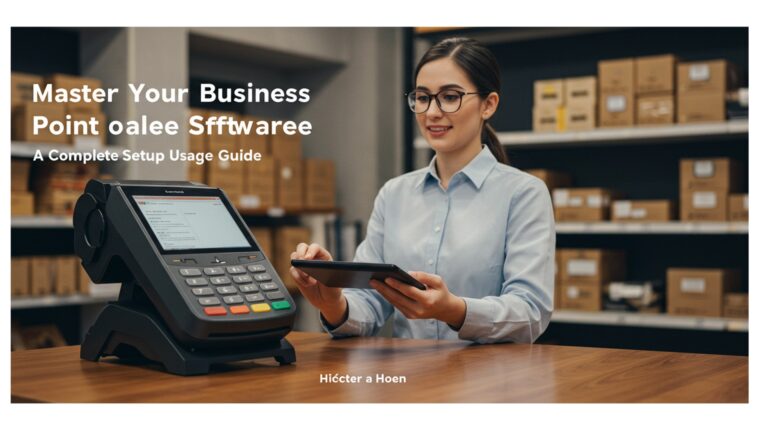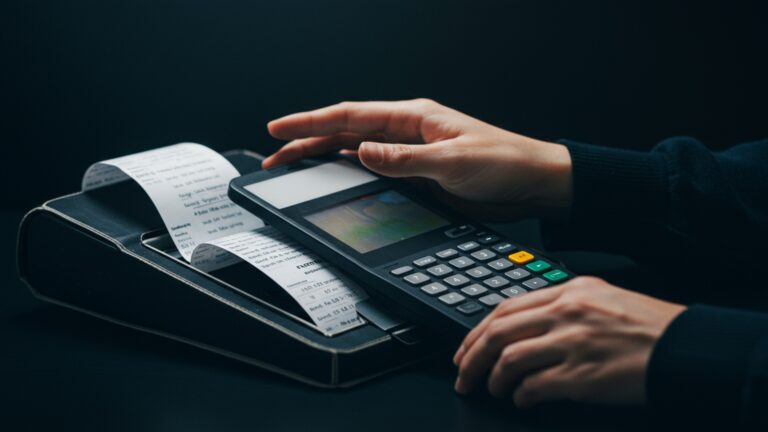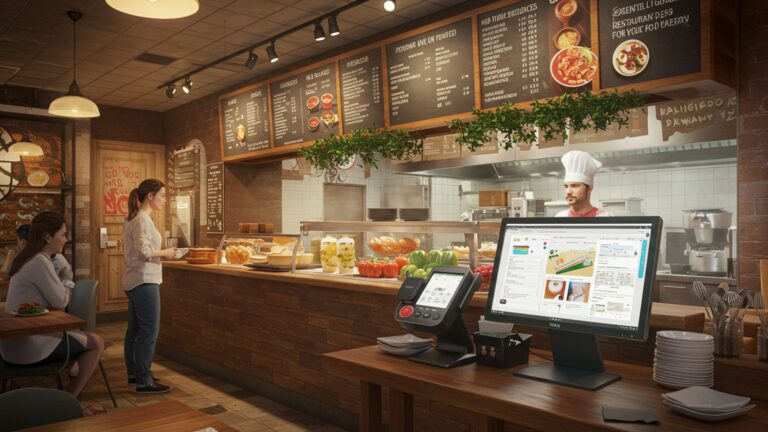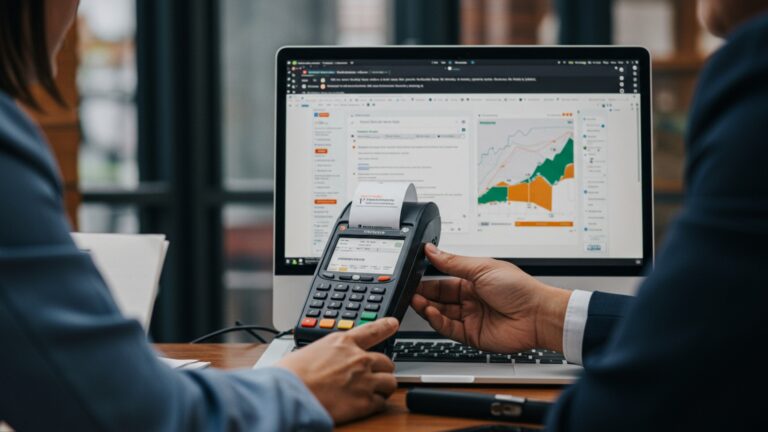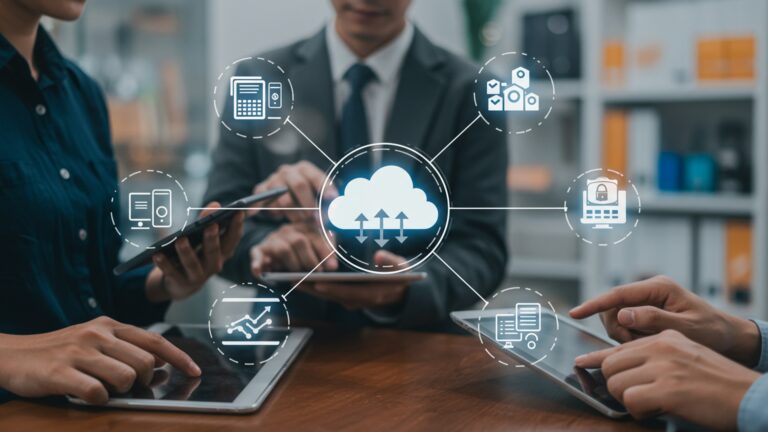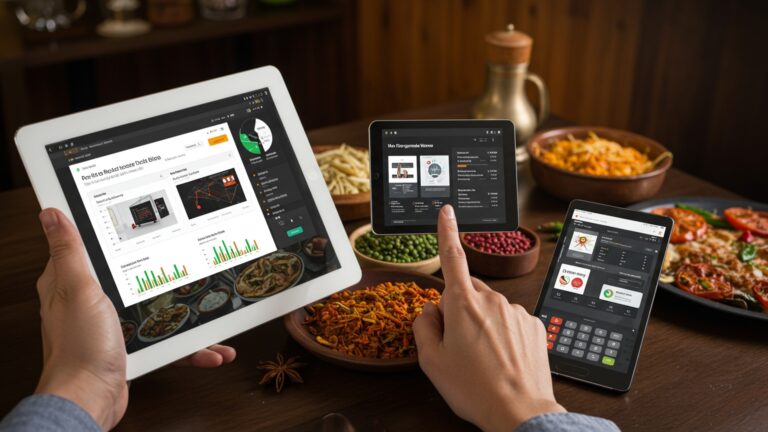Mastering POS Software How to Optimize Business Operations for Efficiency
The modern retail landscape demands more than just transaction processing; it requires strategic operational control. Optimizing your pos software transforms a simple checkout system into the central nervous system of your business. Today’s advanced cloud-based solutions, unlike legacy systems, integrate real-time inventory management, powerful CRM capabilities for personalized customer engagement. comprehensive sales analytics. This allows businesses to streamline operations, predict demand with greater accuracy. offer seamless omnichannel experiences, from in-store purchases to online order pickups. Leveraging these cutting-edge features unlocks significant efficiencies, reducing manual errors and providing data-driven insights that empower agile decision-making in a competitive market.
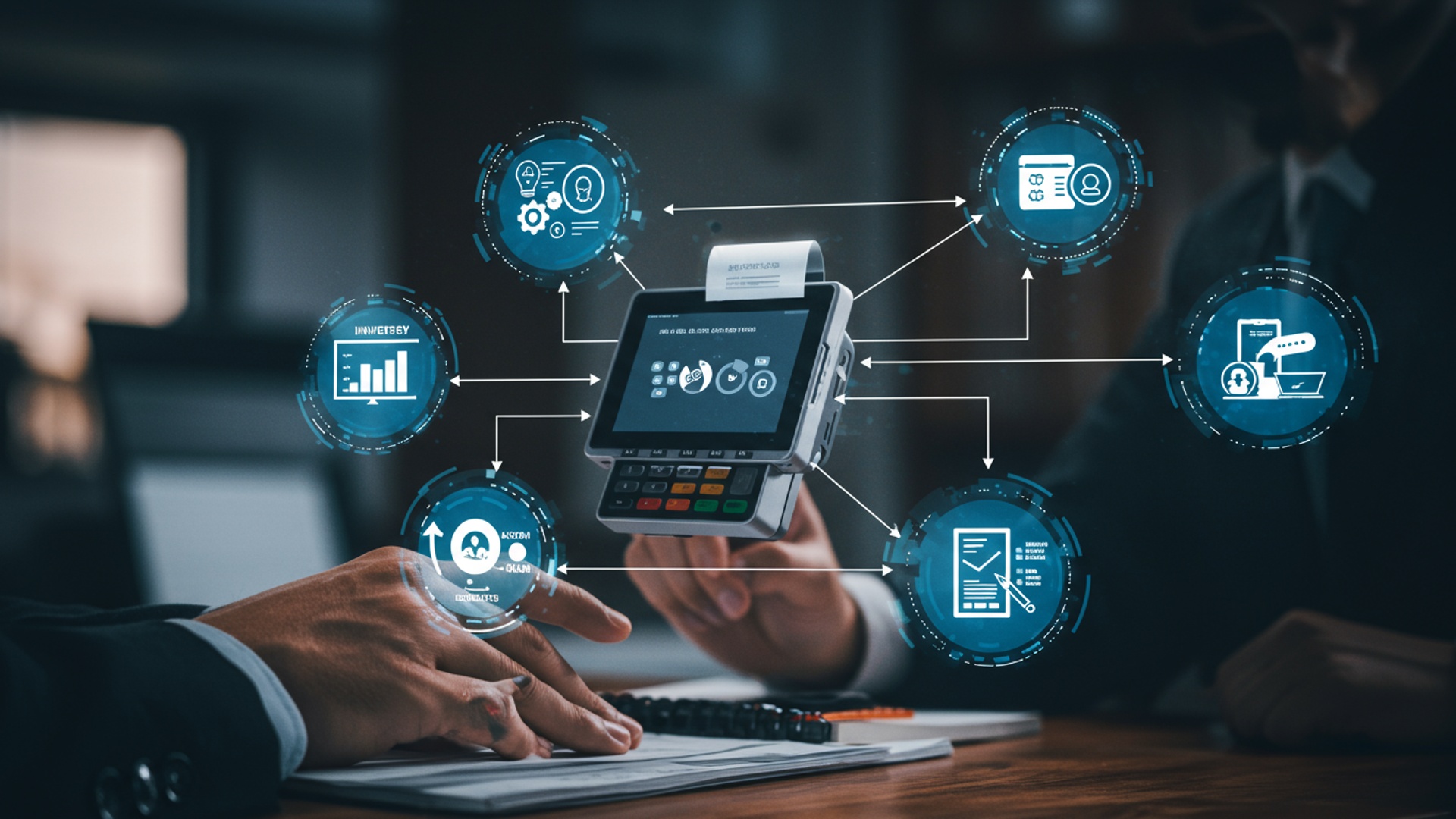
Understanding the Core of POS Software
In today’s fast-paced business environment, efficiency is paramount. At the heart of streamlined retail, hospitality. service operations lies the Point of Sale (POS) system. More than just a glorified cash register, modern pos software has evolved into a comprehensive business management tool. Historically, businesses relied on traditional cash registers for transactions, often coupled with manual ledgers for inventory and sales tracking. This approach was prone to errors, time-consuming. offered limited insights into business performance.
Today, pos software integrates various functions to provide a holistic view of operations. At its core, it processes sales transactions by recording product insights, calculating totals, applying discounts. accepting various payment methods. But, its capabilities extend far beyond this fundamental task. Key components and functionalities typically include:
- Transaction Processing
- Payment Integration
- Inventory Management
- Sales Reporting
- Customer Management
- Employee Management
- Hardware Integration
Handling sales, returns, exchanges. voids efficiently.
Supporting credit/debit cards, mobile payments, gift cards. loyalty points.
Tracking stock levels, managing product variants. monitoring product movement.
Generating detailed reports on sales performance, product popularity. employee productivity.
Storing customer data, managing loyalty programs. tracking purchase history.
Tracking employee hours, managing commissions. assigning permissions.
Connecting with barcode scanners, receipt printers, cash drawers. card readers.
Understanding these foundational elements is the first step toward leveraging pos software to its full potential, transforming it from a simple checkout tool into a strategic asset for business optimization.
Beyond Transactions: The Multifaceted Benefits of Modern POS Software
The power of contemporary pos software lies in its ability to centralize and automate critical business functions, extending far beyond the point of sale itself. By integrating various operational aspects, businesses gain unprecedented control and insight.
- Inventory Management
- Sales Reporting & Analytics
- Customer Relationship Management (CRM)
- Employee Management
- Multi-channel Integration (E-commerce)
A robust pos software system provides real-time updates on stock levels, enabling businesses to prevent stockouts and overstocking. For instance, a small boutique can track popular clothing sizes, identify slow-moving items. automate reorder alerts directly through their POS. This capability minimizes carrying costs and maximizes sales opportunities by ensuring the right products are available at the right time. Consider a scenario where a specific item is selling rapidly; the POS can flag this, allowing the business owner to proactively reorder before the shelf is empty, preventing lost sales.
Gone are the days of manual sales calculations. Modern pos software generates comprehensive reports on sales trends, peak hours, best-selling products. even employee performance. These analytics are invaluable for strategic decision-making. A restaurant, for example, can examine sales data to identify which menu items are most profitable and which are less popular, informing menu adjustments or promotional strategies. This data-driven approach helps optimize staffing, marketing efforts. product offerings.
Many advanced pos software solutions include integrated CRM features. This allows businesses to capture customer insights, track purchase history, manage loyalty programs. even personalize marketing efforts. A coffee shop using POS-integrated CRM can offer a free drink to a loyal customer on their birthday, or send targeted promotions based on their past purchases, fostering stronger customer relationships and repeat business. This personalized approach significantly enhances customer retention.
Beyond tracking sales, pos software can streamline employee management. It can monitor clock-in/out times, calculate commissions. even track individual sales performance. This not only simplifies payroll but also provides insights into team productivity, helping managers identify top performers and areas needing improvement. A retail manager can use POS data to assess which employees are excelling at upselling or cross-selling. use this details for performance reviews or targeted training.
For businesses operating both physical and online stores, multi-channel integration is critical. Many pos software systems seamlessly integrate with e-commerce platforms, synchronizing inventory, sales. customer data across all channels. This ensures that a product sold online is immediately reflected in the physical store’s inventory, preventing overselling and providing a consistent customer experience. A book store, for instance, can manage its in-store and online stock from a single POS dashboard, offering customers accurate availability insights regardless of how they choose to shop.
Choosing the Right POS Software for Your Business
Selecting the appropriate pos software is a critical decision that can significantly impact your business’s efficiency and growth. The “best” system isn’t universal; it’s the one that aligns perfectly with your specific operational needs, budget. future goals.
- On-premise vs. Cloud-based
- Industry-Specific Solutions
- Scalability and Integration Capabilities
- Cost Considerations
This is one of the foundational choices. On-premise POS systems are installed directly on your hardware and managed locally, while cloud-based (or SaaS – Software as a Service) systems are hosted remotely and accessed via the internet. Each has distinct advantages and disadvantages:
| Feature | On-Premise POS Software | Cloud-Based POS Software |
|---|---|---|
| Installation & Hosting | Installed on local servers/hardware. | Hosted remotely by the provider, accessed via web browser/app. |
| Cost Structure | Higher upfront cost (software license, hardware, maintenance); lower recurring fees. | Lower upfront cost; recurring subscription fees (monthly/annually). |
| Accessibility | Limited to specific hardware/location; remote access often requires VPN. | Accessible from any internet-enabled device, anywhere, anytime. |
| Data Security & Backup | Your responsibility for security, backups. disaster recovery. | Provider typically handles security, backups. updates; often robust. |
| Maintenance & Updates | Requires manual updates and maintenance by internal IT or third-party. | Automatic updates and maintenance by the provider. |
| Scalability | Can be complex and costly to scale (hardware upgrades). | Easily scalable, often with different subscription tiers. |
| Offline Capability | Generally functions offline without internet. | Many offer offline mode for transactions, syncing when online. |
A small, independent coffee shop with stable internet might benefit from the flexibility and lower upfront cost of cloud-based pos software, while a large enterprise with specific security protocols and an existing IT infrastructure might opt for an on-premise solution.
Different industries have unique requirements. Retail pos software might focus on inventory tracking, multi-store management. customer loyalty. Restaurant POS systems will prioritize table management, kitchen display systems (KDS), menu customization. order modifications. Service-based businesses (salons, spas) might need appointment scheduling and client history management. Choosing a system tailored to your industry often means getting specialized features out-of-the-box, reducing the need for extensive customization.
Consider your growth plans. Will the pos software accommodate additional locations, increased transaction volumes, or new product lines? Integration capabilities are also crucial. Can it seamlessly connect with your existing accounting software (e. g. , QuickBooks, Xero), e-commerce platform (e. g. , Shopify, WooCommerce), CRM, or payroll system? Seamless integration avoids data silos and reduces manual data entry, saving time and preventing errors.
Beyond the initial purchase or subscription fee, factor in hardware costs (terminals, scanners, printers), installation, training, ongoing support. potential customization fees. Obtain detailed quotes and grasp all associated costs before committing.
Thorough research, demo requests. reading user reviews are essential steps in making an informed decision about your pos software investment.
Implementing and Integrating POS Software for Seamless Operations
Once you’ve chosen the ideal pos software, successful implementation and integration are critical for realizing its full potential. A poorly executed rollout can lead to disruptions, employee frustration. missed opportunities. Here’s how to approach it strategically:
- Planning and Preparation
- Data Migration Strategies
- Hardware Compatibility
- pos software
- pos software
- Training Staff
Before any installation, a detailed plan is essential. This includes defining your objectives (e. g. , reduce checkout time, improve inventory accuracy), mapping out current workflows. identifying potential bottlenecks. Create a timeline for implementation, outlining key milestones and responsibilities. For example, a restaurant transitioning to a new pos software should map out its entire order-to-payment process, from how servers take orders to how kitchen staff receive them, ensuring the new system supports or improves each step.
Moving existing data (product catalogs, customer lists, historical sales) to the new pos software requires careful planning. This often involves exporting data from old systems (or spreadsheets) and importing it into the new one. Ensure data integrity by cleaning up old records, removing duplicates. standardizing formats. It’s highly recommended to perform test migrations on a smaller dataset first and to back up all existing data before the final transfer. Many POS providers offer tools or services to assist with this complex process.
This is arguably the most crucial step. Even the most sophisticated pos software is ineffective if your staff can’t use it proficiently. Provide comprehensive training sessions for all employees who will interact with the system. This should cover not just basic transaction processing but also inventory lookups, returns, applying discounts. troubleshooting common issues. Hands-on practice, clear user manuals. ongoing support (e. g. , a dedicated internal contact person) can significantly ease the transition and boost user adoption. Many vendors offer training resources. some even provide on-site training. A well-trained team leads to fewer errors, faster service. a better customer experience.
A phased rollout, perhaps starting with a single terminal or department, can also help identify and resolve issues before a full-scale launch, ensuring a smoother transition to your new pos software environment.
Optimizing Business Operations with Advanced POS Features
Once your pos software is up and running, the real work of optimization begins. Modern systems offer a wealth of advanced features that, when fully leveraged, can transform operational efficiency and drive profitability. The key is to move beyond basic transaction processing and utilize these sophisticated tools strategically.
- Automating Inventory Reorders
- Personalized Marketing Campaigns (CRM Integration)
- Loss Prevention and Security Features
- Real-time Data for Strategic Decision-Making
One of the most powerful features of advanced pos software is its ability to automate inventory management. By setting reorder points and preferred vendor data, the system can automatically generate purchase orders when stock levels fall below a predefined threshold. For example, a busy grocery store can configure its POS to automatically order more milk when its stock drops to 10 gallons. This significantly reduces manual effort, minimizes the risk of stockouts. ensures popular items are always available, directly impacting customer satisfaction and sales. The system can even factor in lead times from suppliers to ensure timely deliveries.
Integrating your pos software with a CRM or marketing automation platform unlocks powerful personalization capabilities. By analyzing customer purchase history captured at the POS, businesses can segment their audience and launch targeted marketing campaigns. Imagine a pet supply store sending an email discount on cat food to customers who frequently purchase cat-related items, or a birthday coupon to a customer based on their loyalty program data. This level of personalization not only increases the effectiveness of marketing efforts but also builds stronger customer loyalty and encourages repeat business.
Advanced pos software includes features designed to minimize loss and enhance security. These can range from detailed audit trails that track every transaction and user action, to role-based permissions that restrict access to sensitive functions (e. g. , voids, refunds, discounts). Some systems integrate with surveillance cameras, linking transaction data to video footage for easy review in case of discrepancies. This proactive approach helps identify potential theft, reduce errors. maintain financial integrity. For instance, a system can flag unusually high refund rates by a specific employee, prompting further investigation.
Cloud-based pos software excels at providing real-time data accessibility. Business owners can monitor sales, inventory. employee performance from anywhere, at any time, using a smartphone or tablet. This immediate access to critical metrics allows for agile decision-making. If a specific promotion is underperforming, adjustments can be made instantly. If a particular product is selling out rapidly, additional stock can be ordered without delay. This responsiveness to market conditions and operational needs is a significant competitive advantage. A clothing retailer might notice a surge in sales for a particular dress style in real-time and immediately reorder or transfer stock from another less busy location to capitalize on the demand.
By actively exploring and utilizing these advanced functionalities, businesses can transform their pos software from a transactional tool into a dynamic engine for operational excellence and strategic growth.
Leveraging POS Data for Strategic Growth
The true power of modern pos software lies not just in its ability to process transactions. in the wealth of data it collects. Effectively analyzing and acting upon this data is crucial for informed decision-making and sustainable business growth. This is where your POS system transcends its role as an operational tool and becomes a strategic advisor.
- Identifying Sales Trends
- Optimizing Pricing Strategies
- Improving Customer Loyalty Programs
- Forecasting and Budgeting
Your pos software is a treasure trove of sales data. By regularly reviewing sales reports, you can identify patterns such as peak sales times, seasonal fluctuations. the performance of specific product categories or individual items. For example, a bakery might discover that croissant sales spike on weekday mornings, while elaborate cakes are popular on weekends. This insight allows them to optimize staffing schedules, production levels. promotional efforts. Analyzing year-over-year data can also reveal long-term growth trends or potential declines, prompting proactive adjustments to your business model.
Data from your pos software can inform dynamic pricing strategies. By understanding which products are fast-moving versus slow-moving, you can adjust prices to maximize revenue. Items with high demand and low inventory might warrant a slight price increase, while slow-moving stock could benefit from a markdown or bundle deal to clear shelves. Tracking the impact of discounts and promotions through your POS reports allows you to fine-tune future offers, ensuring they are both attractive to customers and profitable for your business. For instance, a retailer can test different price points for a new product and use POS data to determine the optimal price that balances sales volume and profit margins.
Integrated CRM features within pos software provide invaluable data on customer behavior. This allows businesses to refine and personalize loyalty programs. You can identify your most valuable customers, comprehend their purchasing habits. tailor rewards or exclusive offers that truly resonate with them. A coffee shop, for example, might use POS data to identify customers who frequently purchase espresso drinks and offer them a special promotion on a new blend, enhancing their loyalty and encouraging continued engagement. This data-driven approach ensures your loyalty initiatives are effective and generate a strong return on investment.
Accurate historical sales data from your pos software is fundamental for robust forecasting and budgeting. By analyzing past performance, businesses can make more informed predictions about future sales, inventory needs. staffing requirements. This helps in setting realistic financial goals, managing cash flow. making smart investments. A retail chain can use aggregated POS data from all its locations to forecast demand for upcoming seasons, allowing for more efficient purchasing and distribution across its stores, ultimately leading to better inventory allocation and reduced waste.
Embracing a data-first mindset and regularly diving into the analytics provided by your pos software empowers you to make proactive, strategic decisions that fuel sustained business growth and competitive advantage.
Future Trends in POS Software
The landscape of pos software is continuously evolving, driven by technological advancements and changing consumer expectations. Staying abreast of these trends is crucial for businesses looking to maintain a competitive edge and prepare for the future of commerce.
- AI and Machine Learning Integration
- Mobile POS (mPOS)
- Contactless Payments and Digital Wallets
- Enhanced Security Features
Artificial Intelligence (AI) and Machine Learning (ML) are set to revolutionize pos software. These technologies can process vast amounts of data to provide predictive analytics, such as forecasting demand for specific products based on historical sales, weather patterns, or local events. AI can also personalize customer experiences by suggesting upsells or cross-sells based on real-time purchase behavior. For example, a smart POS might recommend a complementary accessory to a customer buying a new smartphone, increasing average transaction value. ML can also enhance fraud detection by identifying unusual transaction patterns, adding an extra layer of security.
The rise of mobile devices has accelerated the adoption of mPOS solutions. These systems allow businesses to process transactions using smartphones or tablets, often paired with compact card readers. mPOS offers unparalleled flexibility, enabling sales on the go, at pop-up shops, or directly on the sales floor, enhancing customer service and reducing checkout lines. For a food truck, an mPOS system is indispensable, allowing them to take orders and payments anywhere they operate, providing a seamless experience for customers.
The pandemic significantly accelerated the shift towards contactless payment methods like NFC (Near Field Communication) and QR code scanning. Modern pos software must support these technologies, including Apple Pay, Google Pay. other digital wallets. This not only offers convenience and speed for customers but also enhances hygiene and security. Businesses that readily accept these payment types are better positioned to meet consumer preferences and streamline the checkout process.
As POS systems become more integrated and handle sensitive data, security remains a top priority. Future pos software will feature even more robust encryption, tokenization for payment processing. advanced biometric authentication for staff access. Compliance with evolving data protection regulations (like GDPR or CCPA) will also be paramount, ensuring customer data is handled securely and transparently. The focus will be on creating impenetrable systems that protect both business assets and customer data from sophisticated cyber threats.
By embracing these emerging trends, businesses can ensure their pos software remains a cutting-edge tool, capable of adapting to future challenges and opportunities in the dynamic retail and service industries.
Conclusion
Mastering POS software truly transforms business operations, moving it beyond mere transaction processing to a strategic asset for efficiency. Your immediate action should be to delve into its full capabilities, not just the billing functions. For instance, leverage real-time inventory tracking to prevent stockouts and overstocking, a common pitfall I’ve seen smaller businesses struggle with until they consistently utilize this feature. This proactive approach, much like a thriving café owner who monitors peak-hour sales analytics to optimize staff scheduling and menu offerings, ensures you’re always a step ahead. Embrace current trends by integrating your online sales channels directly with your cloud-based POS, creating a seamless omni-channel experience for your customers and centralized data for you. My personal tip? Regularly review the advanced reporting features; they often reveal hidden inefficiencies or unexpected sales opportunities. Don’t let your investment lie dormant; empower your team through continuous training to unlock every advantage. The future of your business hinges on how effectively you wield this powerful tool, so commit to constant optimization and watch your enterprise flourish.
More Articles
Master Selecting the Best POS Software in India Your Essential Guide
How to Maximize Retail Sales With Powerful POS Software
Maximize Profit Learn 7 Smart Inventory Management Strategies for Indian POS
Optimize Your Restaurant Operations How to Use POS Software Effectively
7 Essential Benefits of Online Ordering POS Systems in India
FAQs
What exactly is POS software and why should my business care?
POS, or Point of Sale, software is essentially the central hub for all your sales transactions. Beyond just processing payments, it helps manage inventory, track sales data, handle customer insights. even employee shifts. Caring about it means caring about efficiency – it automates tedious tasks, minimizes human error. gives you a clear picture of your business’s performance, all leading to smoother operations and better decision-making.
How can POS really make my day-to-day operations smoother?
It streamlines almost everything! Think faster checkout times, automated inventory updates every time a sale is made, quick access to product data. simplified returns or exchanges. This means less waiting for customers, fewer manual data entries for staff. ultimately, a more efficient and less stressful workflow for everyone involved.
My inventory management is a mess. Can POS software actually fix that?
Absolutely! Modern POS systems are fantastic for inventory. They provide real-time tracking of stock levels, alert you when items are running low. some can even automate purchase orders. This helps prevent overstocking or stockouts, reduces waste. gives you a precise understanding of what’s selling and what’s not, making your inventory management much more organized and cost-effective.
Beyond just ringing up sales, what other cool things can a good POS do?
A lot! Many advanced POS systems include features like customer relationship management (CRM) to build loyalty programs and track customer preferences, employee management for timekeeping and performance tracking, detailed sales reporting and analytics. even multi-location management if you have more than one store. It’s a powerful tool for holistic business management.
How do I pick the right POS system without getting overwhelmed by options?
Start by identifying your specific business needs. Consider your industry (retail, restaurant, service), budget, size. future growth plans. Look for systems that are easy to use, offer the key features you require (like inventory, CRM, reporting), integrate with other tools you use. provide reliable customer support. Don’t be afraid to ask for demos and compare features before committing.
Is training staff on new POS software a huge headache?
It doesn’t have to be. While there’s always a learning curve with new technology, most modern POS systems are designed with user-friendliness in mind. Good vendors offer training resources. a well-structured onboarding plan can make the transition smooth. Focus on hands-on practice, clear instructions. highlight how the new system will make their jobs easier. your team will adapt quickly.
What kind of insights can I get from POS data to help grow my business?
The data from your POS is gold! You can uncover sales trends (what sells best, when. where), identify your most popular products, comprehend customer buying habits, pinpoint peak hours for staffing. even track employee performance. These insights allow you to make data-driven decisions about marketing, inventory, staffing. product offerings, all crucial for strategic business growth.

